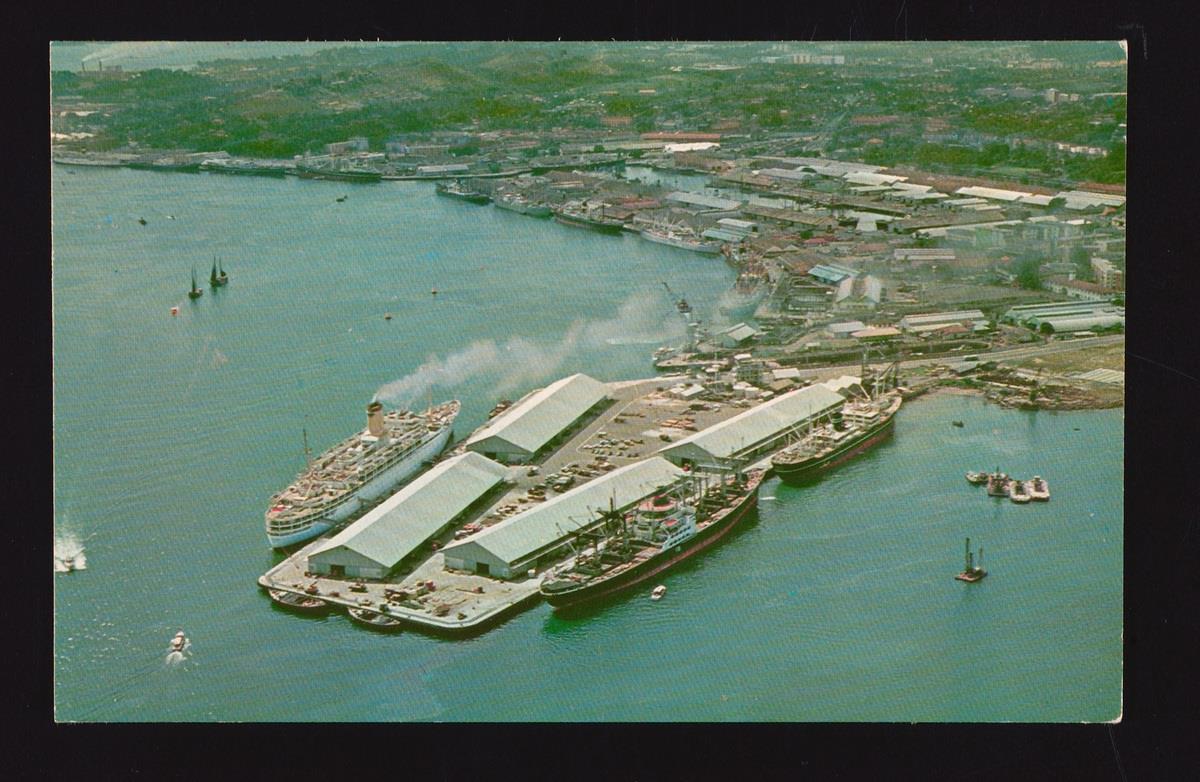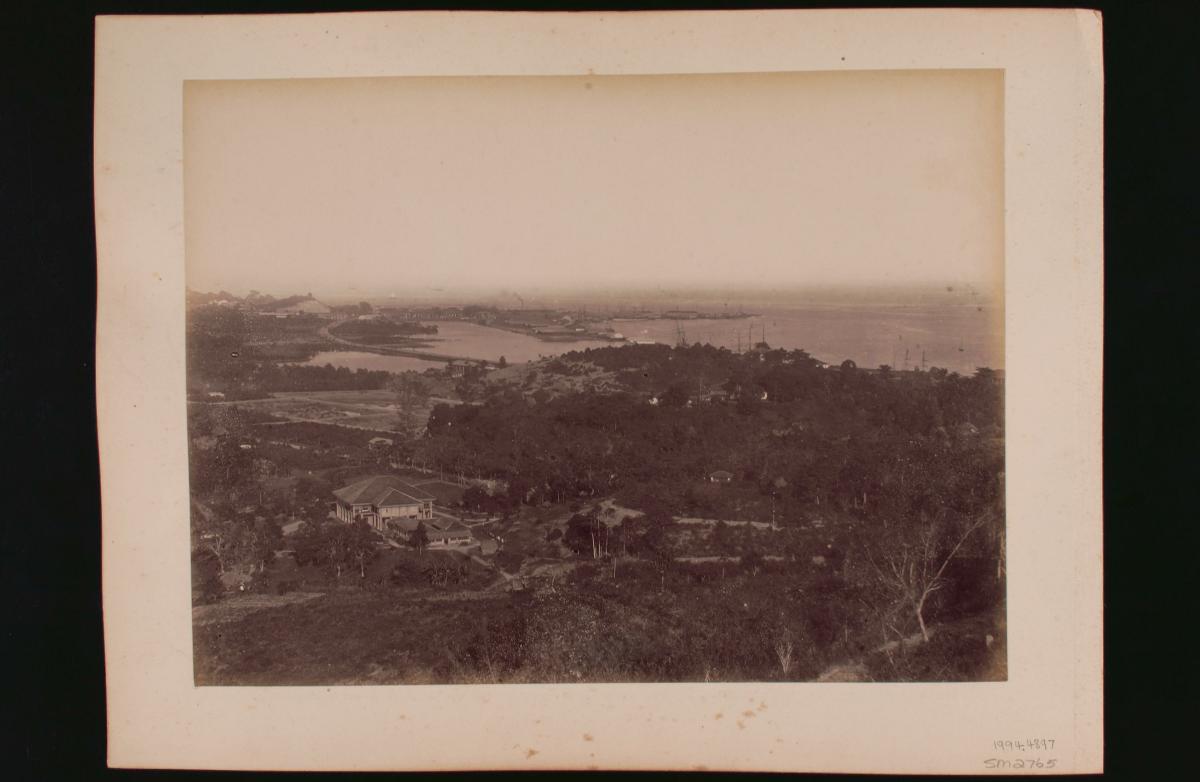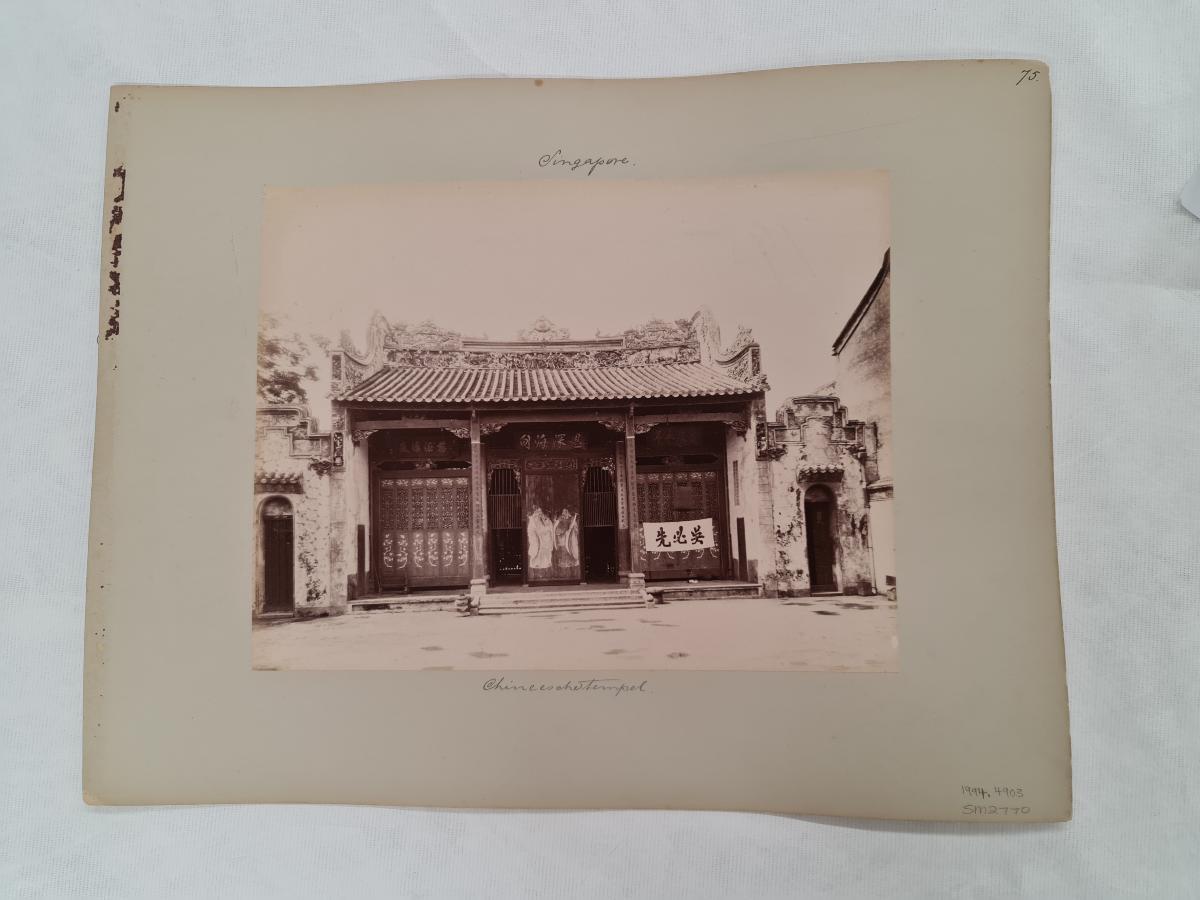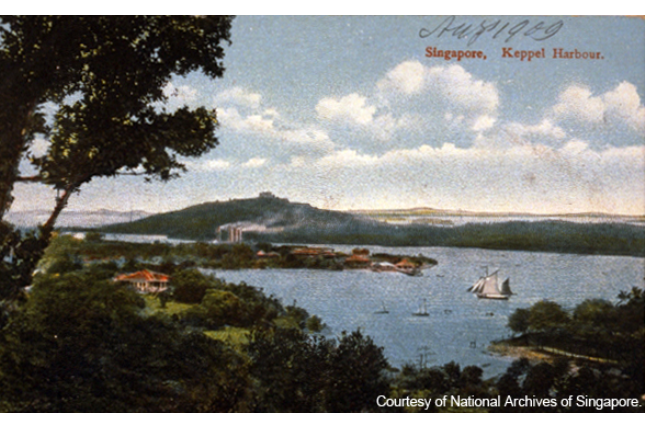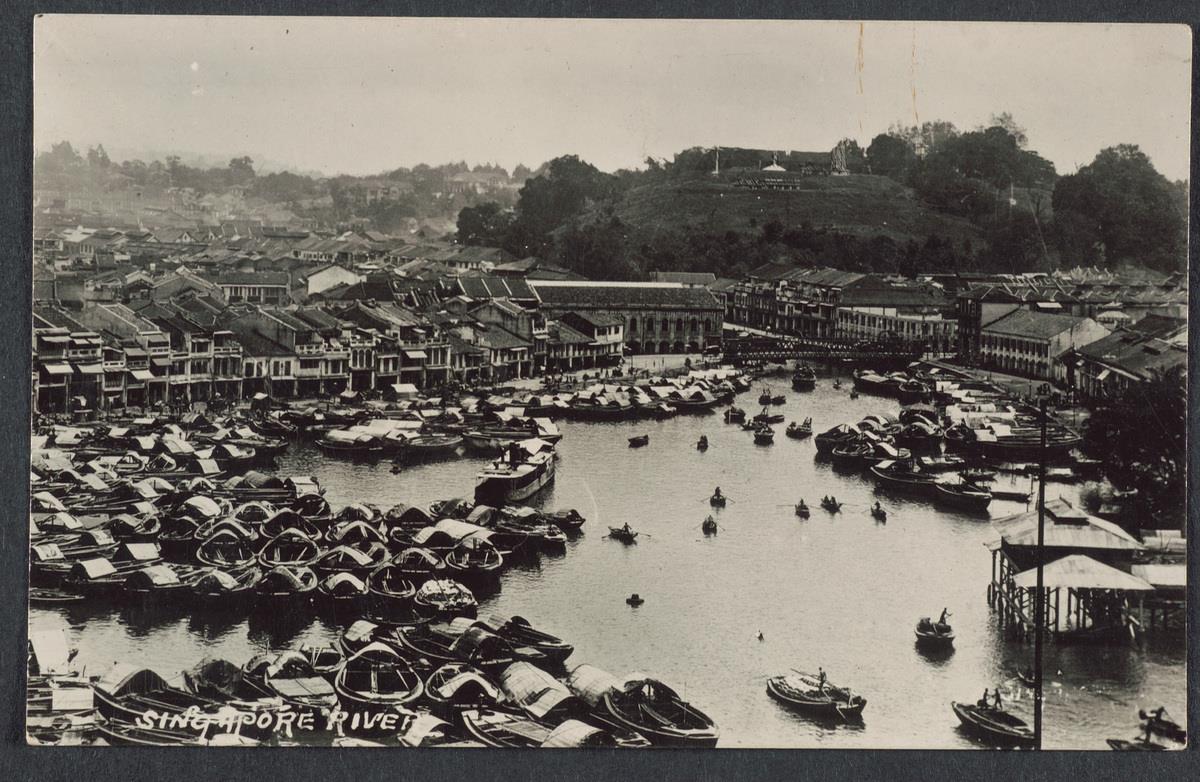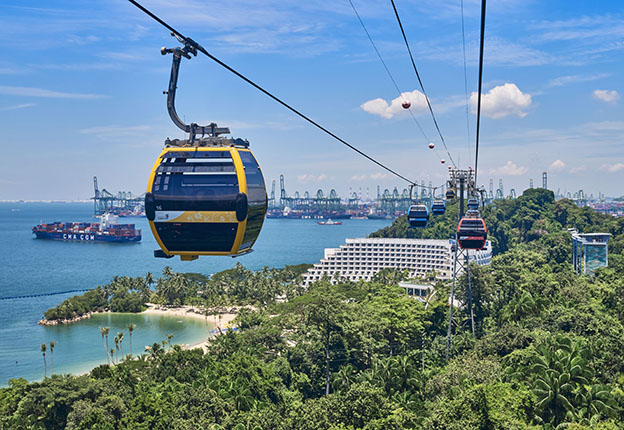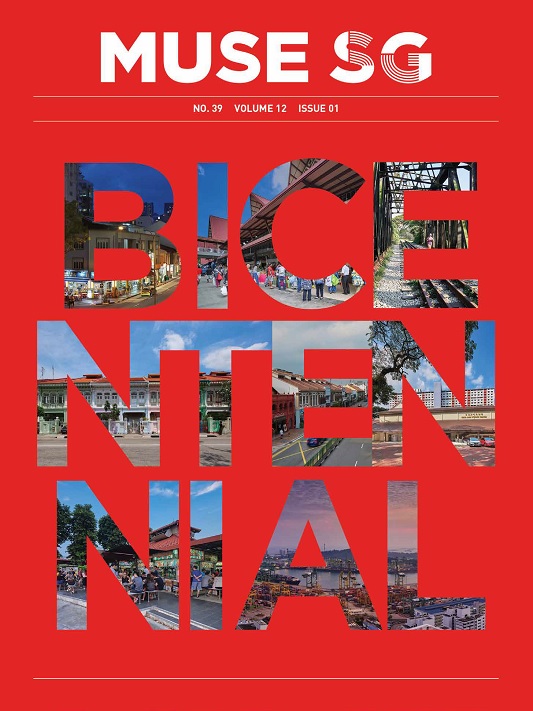Telok Blangah has been a witness to many landmark moments in Singapore’s maritime history. As part of the Bukit Merah Planning Area, Telok Blangah encompasses both Mount Faber at 105 metres above sea level and Labrador Park by the sea where the waves crash against its rocky shore.

Collection of National Museum of Singapore.
Nicknamed Cooking Pot Bay – telok means “bay” in Malay and blanga could refer to a clay cooking pot used by the southern Indians, Telok Blangah was a port of call for Bugis traders in the 1800s and played a part to Singapore’s rise as a thriving port in the region.
However, the waterway by Keppel Bay has actually been active as far back as the 13th century. Wooden ships would ride the wind down from the Straits of Malacca and pass by Singapore on to the South China Sea.

Collection of National Museum of Singapore.
According to local legends, this was also the time that Sang Nila Utama, the Palembang Prince would arrive on the beaches of Telok Blangah and name the island ‘Singapura’.
Living off the same coast was the Orang Laut, literally ‘sea people’ in Malay. These sea nomads lived on long dwelling boats where Keppel Harbour is today. In the August of 1819, the first Resident of Singapore, William Farquhar, spotted the Orang Laut and saw in these waters a ‘New Harbour’.

Collection of National Museum of Singapore.
Captain Keppel
While the deep and calm waters make for a natural harbour, it was not the safest. Due to the passing of cargo between China, India and Europe, many pirates have anchored themselves in the Straits. Chinese junks returned to China empty-handed, with only tales of ambush to take home. These tales tend to share similar narratives where fleets of hundreds encircled them, leaving them no choice but to surrender their goods to the pirates.

Courtesy of National Museum of Singapore.
Henry Keppel, the man who would have the honour of having the bay named after him, was no stranger to the pirates in these waters.
He first sailed to Singapore as a midshipman in 1832, but his life would become very much entwined with the island. He later returned to Singapore as the Captain of a British Royal Navy frigate, the Meander, as part of colonial efforts to clear the Straits of pirates. Armed with 44 cannons, the Meander and its massive sails was a clear threat to the pirates.
And it was in May 1848 aboard the Meander that he discovered the deep water anchorage that made the waters of Singapore a natural harbour. His survey of the waters around Keppel Bay also formed the foundation of the plans for a new harbour of Singapore which was completed in 1886.
The harbour would be called ‘New Harbour’ until Keppel once again returned to Singapore in 1900, as a 92-year-old Admiral. In honour of his contribution and inseparable history with the harbour, acting Governor, Sir Alexander Swettenham, renamed the New Harbour, Keppel.

Collection of National Museum of Singapore.
Keppel Bay’s Docks
In the mid-20th century, if you were to hike up the winding road of Mount Faber, or Telok Blangah Hill as it was called during this time, you would be granted with a panoramic view of the southern shores. Large ships from all over the world would dot the shoreline, stopping by Keppel Harbour for repair and refuel. Ships looking to trade would lower their cargo into smaller bumboats which would find their way into the heart of Singapore River.

Collection of National Museum of Singapore.
You would also see some of Singapore’s oldest docks in their prime. The simply named Dock no. 1, built in 1859, was the first graving dock on the island. Once vessels were safely docked in place, water was pumped and drained out, leaving the hull exposed for repair and maintenance. Eight years later, Dock no. 2 was built.
However, it was in the 1900s where the docks of Keppel Bay saw its golden age. In 1913, Singapore announced to the world the “largest dock East of the Suez”, the King’s Dock. The dock was the second largest in the world when it opened and took over four and a half years to construct, with the use of 203,000 tonnes of concrete.

Collection of Singapore Philatelic Museum, Donated by Prof Cheah Jin Seng.
By the 1950s, Singapore had become one of the busiest ports in the region and to keep up with the overwhelming influx of ships, the Queen’s dock would be built. These four docks became the building blocks of Singapore’s post-independent economy as it sprinted towards the 20th century. Becoming a maritime hotspot, the bay bustled as workers at shipyard removed rust and barnacles while repainting large ships from across the world.
Keppel Bay in the 21st Century
Today, shipyard activity has been shifted to Tuas and these docks are no longer around. Keppel Bay has evolved from a busy shipyard to a luxurious hideaway at the fringe of the city centre. Luxury waterfront condominiums have been raised on the very grounds where seamen once stood and the docks of a past century have blended themselves into modern Singapore.The Caribbean at Keppel Bay stands on where Dock no. 2 used to be.
Although the landscape has vastly shifted away from its previous nature at first glance, echoes of the dock’s place in history can still be seen in the water channels the condominium surrounds.
However, its historical significance can also be seen in the condominiums raised in its place as well. With names such as Reflections, Corals and Caribbean, these buildings erected a tribute to Keppel Bay’s seafaring past.




